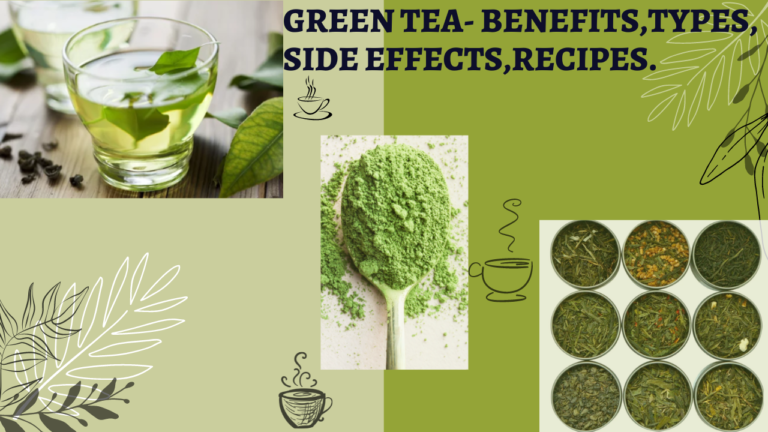Preface-
Cold plasma is a novel non-thermal technology. Cold plasma has numerous uses in different sectors. Within the food industry, it is used to disinfect packaging material and food, prevent physical and chemical changes in food, inactivate the enzymes and much more. Read the article to know more about cold plasma technology.
What is cold plasma?
Cold plasma also known as a nonthermal plasma or non-equilibrium plasma is the plasma where individual components present in it are at different temperatures from each other. It is a partially ionized gas consisting of ions, electrons, UV photons, and reactive neutrals like radicals, excited and ground-state molecules.
The electrons are at a higher temperature than ions and neutrons. Cold plasma is a source of high-temperature electrons in suitable conditions. When cold plasma reacts with an open or controlled environment, it creates many reactive species. These species can be used in different fields of science.

Cold plasma.
Image credits – https://novaplasma.com/cold-plasma-technology/
What is plasma?
Plasma is considered the fourth state of matter. Plasma can be produced in the laboratory by heating a gas to an extremely high temperature. Plasma consists of a mixture of electrons, neutrons, and charged atoms.
Plasma is the most common state of matter in the universe. It makes up the sun, stars, etc.

Plasma is the fourth state of matter.
Image credits – https://unfoldanswers.com/what-is-plasma-the-fourth-state-of-matter/
What are the uses of cold plasma?
Following are the uses of cold plasma:
- Cold plasma can be used for the treatment of teeth and skin. It can also be used for the sterilization of medical devices.
- It is used to produce computer chips.
- Cold plasma technology in the food industry is used for packaging and food production.
- Cold plasma is used for purifying air and water.
- Continuous studies are going on cold plasma to discover its uses in several fields; the researchers are surprised by the results every time.

Uses of cold plasma.
Image credits – https://www.terraplasma.com/en/application-areas/
Applications of cold plasma technology in the food industry:
- Cold plasma can be used to improve microbial quality and prohibit rapid physical, chemical, and sensory changes.
- Cold plasma treatment is effective for extending the shelf life of different food products.
- Merging cold plasma technology with other technologies such as nanotechnology, pulsed electric field [PEE], and pulsed light [PL], can be further studied and used to ensure food safety.
- Cold plasma is used to disinfect packaging materials used for food products and to decontaminate different food items.
- Cold plasma is used to prevent browning reactions that occur in food by inactivating the enzymes.
- Cold plasma can be used to retain bioactive compounds in foods. It is especially useful for heat-sensitive foods because it is non-thermal and can be used to sterilize them.
Cold plasma is a beneficial technology for the food industry but requires more research and development. More studies are needed because it releases secondary products like ozone, UV, and reactive oxygen species.
Evaluating the safety of gases used in cold plasma technology will help both consumers and food processors to understand its wide-scale uses and safety.

Uses of cold plasma in the food industry.
Image credits – https://www.mdpi.com/2304-8158/9/10/1435
Decontamination of foods using cold plasma technology:
Cold plasma technology uses energetic reactive gases to decontaminate meats, poultry, fruits, and vegetables. The sanitizing method utilizes electricity and a carrier gas like oxygen, nitrogen, or helium. It is effective for pathogens like Salmonella typhimurium [1], Escherichia coli [2], Listeria monocytogenes [3], and Staphylococcus aureus [4].
The time of treatment depends upon the food products and processing conditions. More studies are required to fully understand cold plasma technology.

Decontamination of almonds using cold plasma.
Image credits – https://www.semanticscholar.org/paper/Cold-plasma-decontamination-of-foods.-Niemira/8dc1bfed72ca912de73786538ee19d6c0519d0af
Decontamination of packaging materials using cold plasma technology:
Packaging protects the food from the outside environment during transportation and distribution. Due to its low temperature, cold plasma technology can disinfect heat-sensitive packaging materials like polythene ethylene and polycarbonate. [5]
The barrier properties of packaging materials can be enhanced using cold plasma processing.

Decontamination of packaging material using cold plasma.
Image credits – https://www.foodnavigator.com/Article/2011/11/02/Pathogen-inactivating-plasma-can-lead-to-double-shelf-life-expert#
Effect of cold plasma technology on physical qualities of food products:
The application of cold plasma treatment can affect the physical qualities of food like colour and texture.
Colour – The colour of food products is an important factor in their acceptability. If there is any change in the colour of a food product then it can become a great hurdle to selling it in the market.
Several studies reported that there was no notable loss of colour after strawberries, apples, kiwi, cherry tomatoes, lettuce, and carrots were treated with cold plasma. [ 12, 13, 14, 15, 16]
In some cases, loss of colour was reported for blueberries due to high treatment duration [17]. The difference in the colour of fruit juices was negligible and not visible to the naked eye after cold plasma treatment. [ 18, 19]
On the other hand, some studies reported an increase in the brightness and whiteness of brown rice after treatment with cold plasma. [20]
Overall, after looking at various studies it is pretty clear that cold plasma treatment has negligible effects on the colour of food products if, the treatment time is lower.
Texture – No crucial differences in texture were observed after fresh strawberries, apples, melons, and cherry tomatoes were treated with cold plasma [ 21, 22, 23, 24]. However, the firmness of blueberry reduced after cold plasma treatment [25, 26].
Grains and legumes treated with cold plasma saw a decrease in their hardness and chewiness. They required less soaking and cooking time [ 27, 28, 29].
Effect of cold plasma on chemical qualities of food:
pH and Acidity, protein and enzymes, carbohydrates, vitamins, lipids, and antioxidant activity are chemical qualities of food.
pH and Acidity – Any changes in pH and acidity can impact the taste, texture, and shelf life of the food. Various studies have reported changes in pH and acidity of food products after cold plasma treatment. [30]
The pH and acidity change in food products after cold plasma treatment because the plasma reactive gases interact with the moisture present in food.
Protein and enzymes – Cold plasma treatment effectively inactivates the enzymes present in the food [31].
The protein denaturation after cold plasma treatment can be due to the interaction of plasma reactive species with amino acids and secondary structure due to loss of α-helix and β-sheet. [31,32]
Type of enzyme/protein, type of plasma, reactive gas, processing parameters, size of food products, and enzyme media play an essential role in protein denaturation and enzyme inactivation by cold plasma treatment.
Carbohydrates – Carbohydrates are important to maintain the quality of different foods.
Cashew apple juice and prebiotic orange juice after being treated with cold plasma showed a decrease in fructose, increase in sucrose and degradation of oligosaccharides with a high degree of polymerization. [ 33, 34]
The effect of cold plasma treatment on the starch present in grains and legumes leads to depolymerization and cross-linking of starch impacting its structural, functional, and rheological properties. [35]
Vitamins – Retaining vitamins are necessary to maintain the nutritional value of food products. Most of the research on cold plasma treatment is carried out on Vitamin C [ascorbic acid].
Many studies have shown no remarkable reduction in ascorbic acid content after cold plasma treatment. [ 36, 37, 38]
In sliced fruits and vegetables, ascorbic acid content reduced up to 4% after cold plasma treatment [39]. Reduction in Vitamin C was also observed in cashew apple juice and orange juice due to cold plasma treatment [40, 41].
Further studies on cold plasma are required for different vitamins present in food products.
Lipids – Oxidation of lipids can cause an undesirable change in colour, taste, odour, and shelf life of food products. Cold plasma is usually considered an advanced oxidation process.
An increase in lipid oxidation was seen in fresh pork and beef after treating them with cold plasma for a longer period. [42]
The available studies on the effects of cold plasma on lipids present in food are very limited. Treatment time and plasma gas are the two significant factors affecting lipid oxidation.
Antioxidant activity – Antioxidant activity indicates the presence of various polyphenols, flavonoids, and flavonols in food. The effects of cold plasma on antioxidant activity vary according to the food products.
Orange juice, white grape juice, and lambs’ lettuce saw a decrease in total phenols after cold plasma treatment [ 43, 44, 45]. However, phenols in cashew apple juice and blueberries were increased after applying cold plasma. [ 46, 47]
After treating radish sprouts, red chicory, kiwi, and onion powder with cold plasma no notable changes were seen in their antioxidant activity. [ 48, 49, 50, 51]
Conclusion: Cold plasma is an efficient and useful technology for the food industry. It is environmentally friendly and does not produce toxic waste. More studies on cold plasma technology will be helpful for consumers and food processors.
Hope you found this blog useful.
References:
https://www.ncbi.nlm.nih.gov/pmc/articles/PMC5789267/#B21-foods-07-00004
https://www.science.lu/fr/my-research-90-seconds/cold-plasma-what-it-and-how-can-it-be-used



Applications of Cold plasma in food industry.